10 Sep – 05 Dec 2021
Drift: Art and Dark Matter
-
Sunny Kerr
Sunny Kerr is Curator of Contemporary Art at Agnes Etherington Art Centre at Queen’s University and the curator of Drift: Art and Dark Matter.
Read More
-
Nadia Lichtig
ArtistNadia Lichtig is an artist currently living in the South of France. In her multilayered work, voice is transposed into various media including painting, print, sculpture, photography, performance, soundscape and song—each medium approached not as a field to be mastered, but as a source of possibilities to question our ability to decipher the present. Visual and aural aspects entangle in her performances. Lichtig studied linguistics at the LMU Munich in Germany and at the Ecole des Beaux-Arts de Paris, France with Jean-Luc Vilmouth, where she graduated with honours in 2001, before assisting Mike Kelley in Los Angeles the same year. She taught at the Shrishti School of Art and Technology, Bangalore, India as a visiting professor in 2006, at the Ecole des Beaux-Arts of Valence in 2007 and is professor of Fine Arts at the Ecole Supérieure des Beaux-arts of Montpellier (MOCO-ESBA), France since 2009. She has collaborated with musicians who are also visual artists, such as Bertrand Georges (Audible), Christian Bouyjou (Popopfalse), Nicolu (La Chatte), Nina Canal (Ut) and Michael Moorley (The dead C). Lichtig worked and works under several group names and pseudonyms (until 2009: EchoparK, Falseparklocation, Skrietch, Ghosttrap and Nanana).
Read More
-
Josèfa Ntjam
ArtistJosèfa Ntjam was born in 1992 in Metz (FR), and currently lives and works in Paris. Ntjam is part of a generation of artists who grew up with the internet, communicating and sending images by electromagnetic wave. Working with video, text, installation, performance and photomontage, Ntjam creates a story with every piece that acts as a reflection of the world around her. Drawing connections to science fiction and the cosmos, Ntjam has said of her work, “I sat there some time ago with Sun Ra in his Spaceship experimenting with a series of alternative stories. An exoteric syncretism with which I travel as a vessel in perpetual motion.” Ntjam studied in Amiens and Dakar (Cheikh Anta Diop University) and graduated from l’Ecole Nationale Supérieure d’Art, Bourges (FR) and Ecole Nationale Supérieure d’Art, Paris-Cergy (FR). Her works and performance have been shown at numerous venues such as the 15th Biennial of Lyon, DOC! Paris, a la Zentral (CH), Palais de Tokyo, Beton Salon, La Cite internationale des arts, la Bienanale de Dakar (SN), Let Us Rflect Festival (FR), FRAC de Caen, and CAC Bretigny.
Read More
-
Anne Riley
ArtistAnne Riley is a multidisciplinary artist living as an uninvited Slavey Dene/German guest from Fort Nelson First Nation on the unceded territories of the xʷməθkʷəy̍əm, Sḵwx̱wú7mesh and Sel̓íl̓witulh Nations. Her work explores different ways of being and becoming, touch and Indigeneity. Riley received her BFA from the University of Texas at Austin in 2012 and has exhibited across the United States and Canada. From 2018 to 2020, Riley collaborated with T’uy’tanat Cease Wyss on A Constellation of Remediation, a public art project commissioned by the City of Vancouver that consisted of Indigenous remediation gardens throughout the city. Riley and Wyss were long-listed for the 2021 Sobey Art Award. Since this project, Riley participated in the Drift: Art and Dark Matter residency and exhibition, creating works that consider the possibilities of making and being beyond the confines of western institutions and extractive processes.
Read More
-
Jol Thoms
ArtistJol Thoms is a Canadian-born, European-based artist, author and sound designer. Both his written and moving-image work engage posthumanism, feminist science studies, general ecology and the environmental implications of pervasive technical/sensing devices. In the fields of neutrino and dark matter physics he collaborates with renowned physics institutes around the world. These “laboratory-landscapes” are the focus of his practice led PhD at the University of Westminster. In 2017 Thoms was a fellow of Schloss Solitude and resident artist at the Bosch Campus for Research and Advanced Engineering. Thoms graduated with an Honours BA in Philosophy, Art History and Visual Studies from the University of Toronto (2009) and later studied under Simon Starling at the Städelschule in Frankfurt (2013). Between 2014 and 2016 he developed and taught an experimental creative-research program for architecture students at the University of Braunschweig with then interim director Tomás Saraceno. In 2016 Thoms won the MERU Art*Science Award for his film G24|0vßß, which was installed in the Blind Faith: Between the Cognitive and the Visceral in Contemporary Art group exhibition at Haus der Kunst, Munich. Thoms is a lecturer in the MA Art and Ecology program at Goldsmiths University, London.
Read More
-
Denise Ferreira da Silva
ArtistDenise Ferreira da Silva is an artist and Professor at UBC’s Social Justice Institute-GRSJ and Adjunct Professor at Monash University’s School of Art, Design and Architecture. She is the author of Toward a Global Idea of Race (University of Minnesota Press, 2007), A Dívida Impagavel (Oficina da Imaginaçāo Política and Living Commons, 2019), Unpayable Debt (Sternberg/MIT Press, 2022) and co-editor (with Paula Chakravartty) of Race, Empire, and the Crisis of the Subprime (Johns Hopkins University Press, 2013). Her artistic works include the films with Arjuna Neuman and the relational art practices Poethical Readings and Sensing Salon in collaboration with Valentina Desideri. She has exhibited and lectured at the Pompidou Center (Paris), Whitechapel Gallery (London), MASP (Sao Paulo), Guggenheim (New York) and MoMA (New York). She has written for publications from Liverpool Biennale, 2017; Sao Paulo Biennale, 2016, Venice Biennale, 2017, and Documenta 14 and published in journals such as Canadian Art, Frieze, Pass, Texte Zur Kunst and e-flux. She has held visiting professorships at major universities in Australia, Brazil, Britain, Denmark, Germany and the United States and is a member of the collective EhChO.org and an editor of Third Text.
Read More
-
Arjuna Neuman
ArtistArjuna Neuman was born on an airplane, that’s why he has two passports. He is an artist, filmmaker and writer. With recent presentations at CCA Glasgow; Centre Pompidou, Paris; Manifesta 10, Marseille; Showroom Gallery, London; TPW Gallery, Toronto; Forum Expanded, Berlin Berlinale; Jameel Art Centre, Dubai; Berlin Biennial 10, Germany; Serpentine, London X Qalandia Biennial, Palestine; Gasworks, London; Bold Tendencies, London, UK; Or Gallery, Vancouver; Whitechapel Gallery, London; Istanbul Modern, Turkey; MAAT and Docslisboa, Portugal; Sharjah Biennial 13, UAE; Bergen Assembly, Norway; at NTU Centre for Contemporary Art, Singapore; the 56th Venice Biennale and SuperCommunity; Industry of Light, London; the Haus Der Kulturen der Welt; at Ashkal Alwan and the Beirut Art Centre, Lebanon; Le Gaite Lyric, Paris; the Canadian Centre for Architecture; and the Rat School of Art, Seoul amongst others. As a writer he has published essays in Relief Press, Into the Pines Press, The Journal for New Writing, VIA Magazine, Concord, Art Voices, Flaunt, LEAP, Hearings and e-flux.
Read More
An invisible matter is having a gravitational effect on everything. Without the gravity of this “dark” matter, galaxies would fly apart. Observational data in astroparticle physics indicate that it exists, but so far dark matter hasn’t been directly detected. Given the contours of such an unknown, artists Nadia Lichtig, Josèfa Ntjam, Anne Riley and Jol Thoms reflect on the “how” and “why” of physics and art as diverse and interrelating practices of knowledge. Through openness to exchange between disciplines, they have created works that are sensory agents between scientific ideas of dark matter and the exploration of that which has never been directly sensed.
For Drift: Art and Dark Matter, these four artists of national and international stature were invited to make new work while engaging with physicists, chemists and engineers contributing to the search for dark matter at SNOLAB’s facility in Sudbury, two kilometres below the surface of the Earth. The title Drift draws from the mining term for a horizontal tunnel, in this case the hot underground passageway in the copper and nickel mine stretching between the elevator and the clean lab spaces of SNOLAB. The project thereby begins from a reflection on the forms and energies that connect physics to art, labour, landscapes, cultures and histories.
As a complement to the Drift exhibition, the Belkin is collaborating with the Stewart Blusson Quantum Matter Institute (SBQMI) and the Department of Physics and Astronomy at UBC on Ars Scientia, an interdisciplinary research project fusing the praxes of art and science. Beginning in May 2021, Ars Scientia partnered scientists with artists to conduct six-month residencies that explore the potential for academic art-science collaborations. Artists Justine Chambers, Josephine Lee, Khan Lee and Kelly Lycan will work with physicists Rysa Greenwood, Alannah Hallas, Daniel Korchinski, Kirk Madison, Sarah Morris and Luke Reynolds to identify areas of collaborative research in pursuit of both scientific and artistic aims. The residencies will culminate in a research symposium where collaborative findings will be shared, set to take place in November 2021.
Drift: Art and Dark Matter is a residency and exhibition project generated by Agnes Etherington Art Centre, the Arthur B. McDonald Canadian Astroparticle Physics Research Institute and SNOLAB, with the support of the Canada Council for the Arts, the Ontario Arts Council, the Stonecroft Foundation, George Taylor Richardson Memorial Fund and the City of Kingston Arts Fund through the Kingston Arts Council. The project is curated by Sunny Kerr, Curator of Contemporary Art at Agnes Etherington Art Centre. The Belkin gratefully acknowledges the generous support of the Canada Council for the Arts, the Province of British Columbia through the BC Arts Council, UBC Grants for Catalyzing Research Clusters, and our Belkin Curator’s Forum members.
Planning your visit during COVID-19

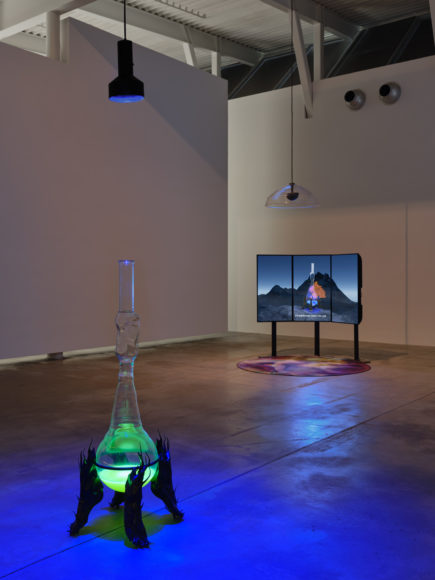
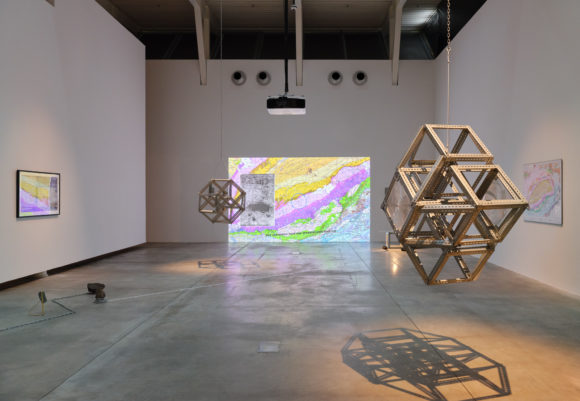
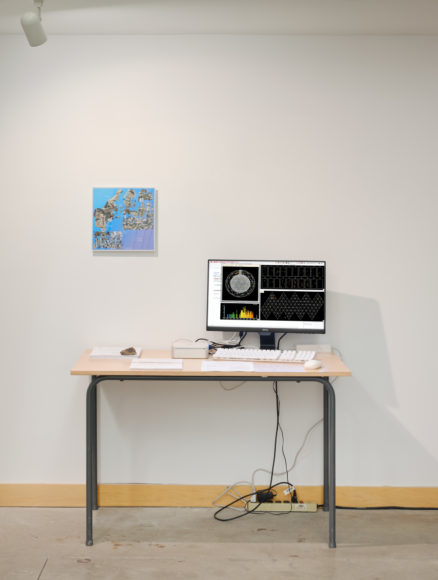
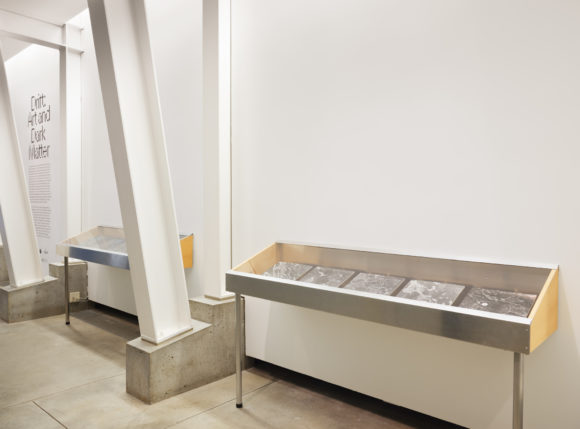
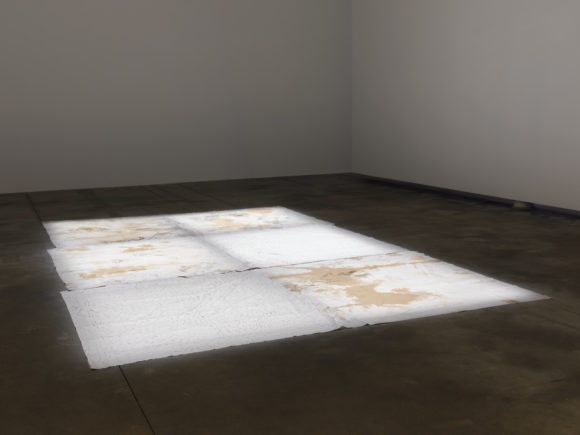
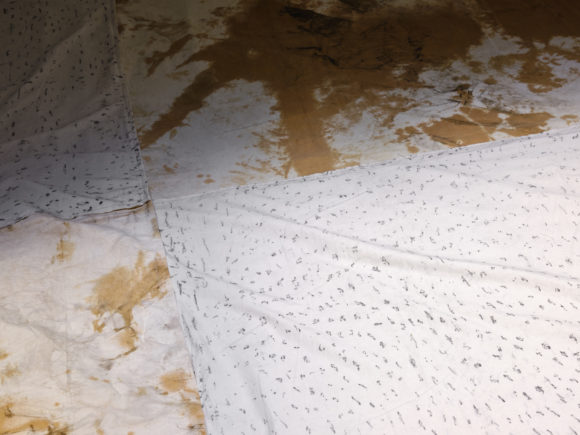
Image (above): Jol Thoms, Orthomorph (Tunneling), 2020, digital print. Courtesy of the artist

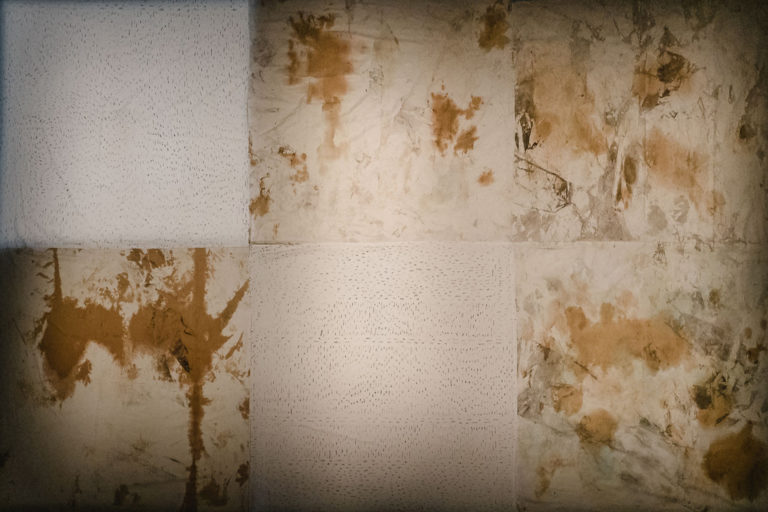
Nadia Lichtig, Blank Spots, 2021–ongoing, frottage on canvas, theatre lights, sound. Collection of the artist
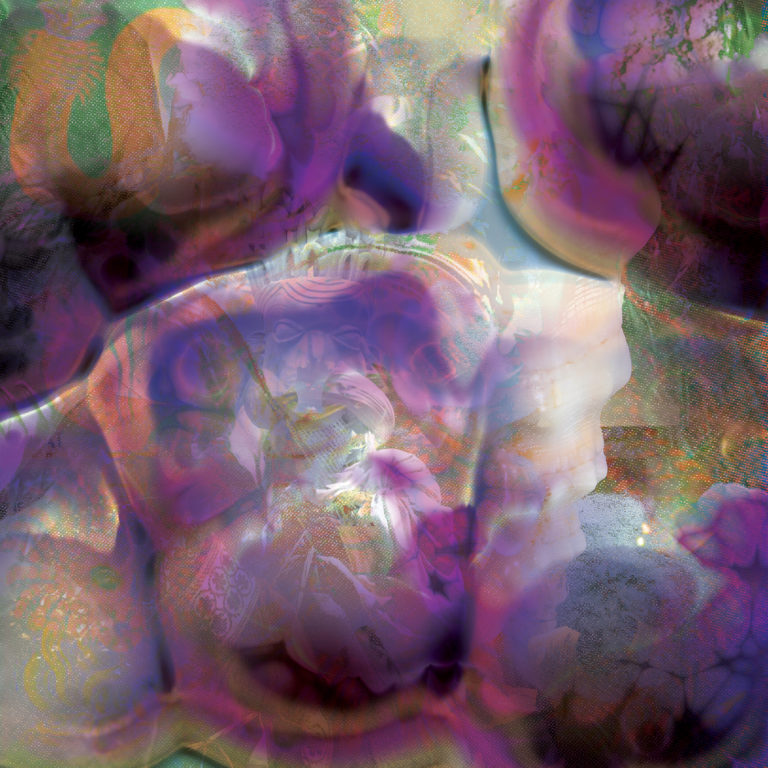
Josèfa Ntjam, Organic Nebula (detail), 2019, carpet, photomontage. Collection of the artist
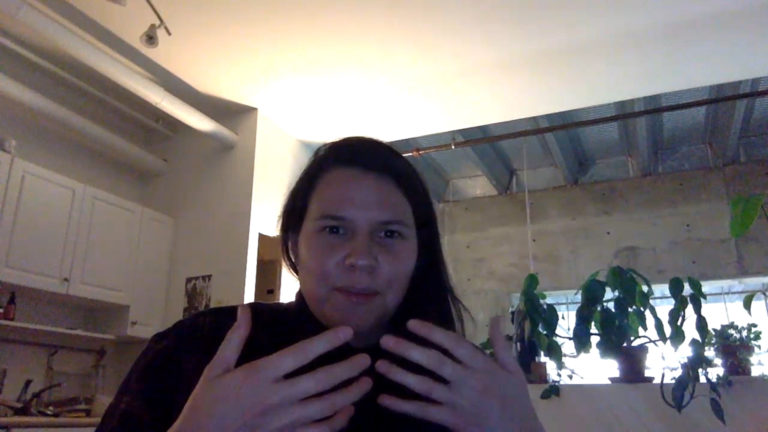
Anne Riley, the heart of the matter (still), 2020, video with sound. Collection of the artist
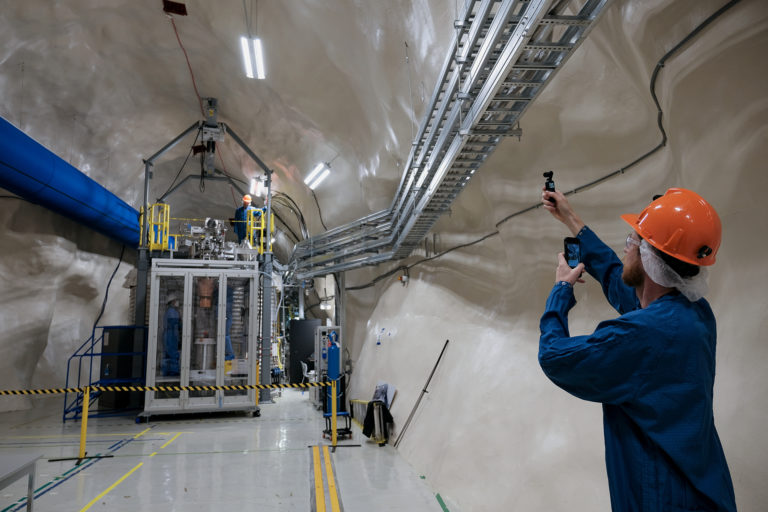
Artist Jol Thomson documents researchers working on CUTE (a Cryogenic Underground Test Facility) at SNOLAB. Photo: Gerry Kingsley
-
Sunny Kerr
Sunny Kerr is Curator of Contemporary Art at Agnes Etherington Art Centre at Queen’s University and the curator of Drift: Art and Dark Matter.
Read More
-
Nadia Lichtig
ArtistNadia Lichtig is an artist currently living in the South of France. In her multilayered work, voice is transposed into various media including painting, print, sculpture, photography, performance, soundscape and song—each medium approached not as a field to be mastered, but as a source of possibilities to question our ability to decipher the present. Visual and aural aspects entangle in her performances. Lichtig studied linguistics at the LMU Munich in Germany and at the Ecole des Beaux-Arts de Paris, France with Jean-Luc Vilmouth, where she graduated with honours in 2001, before assisting Mike Kelley in Los Angeles the same year. She taught at the Shrishti School of Art and Technology, Bangalore, India as a visiting professor in 2006, at the Ecole des Beaux-Arts of Valence in 2007 and is professor of Fine Arts at the Ecole Supérieure des Beaux-arts of Montpellier (MOCO-ESBA), France since 2009. She has collaborated with musicians who are also visual artists, such as Bertrand Georges (Audible), Christian Bouyjou (Popopfalse), Nicolu (La Chatte), Nina Canal (Ut) and Michael Moorley (The dead C). Lichtig worked and works under several group names and pseudonyms (until 2009: EchoparK, Falseparklocation, Skrietch, Ghosttrap and Nanana).
Read More
-
Josèfa Ntjam
ArtistJosèfa Ntjam was born in 1992 in Metz (FR), and currently lives and works in Paris. Ntjam is part of a generation of artists who grew up with the internet, communicating and sending images by electromagnetic wave. Working with video, text, installation, performance and photomontage, Ntjam creates a story with every piece that acts as a reflection of the world around her. Drawing connections to science fiction and the cosmos, Ntjam has said of her work, “I sat there some time ago with Sun Ra in his Spaceship experimenting with a series of alternative stories. An exoteric syncretism with which I travel as a vessel in perpetual motion.” Ntjam studied in Amiens and Dakar (Cheikh Anta Diop University) and graduated from l’Ecole Nationale Supérieure d’Art, Bourges (FR) and Ecole Nationale Supérieure d’Art, Paris-Cergy (FR). Her works and performance have been shown at numerous venues such as the 15th Biennial of Lyon, DOC! Paris, a la Zentral (CH), Palais de Tokyo, Beton Salon, La Cite internationale des arts, la Bienanale de Dakar (SN), Let Us Rflect Festival (FR), FRAC de Caen, and CAC Bretigny.
Read More
-
Anne Riley
ArtistAnne Riley is a multidisciplinary artist living as an uninvited Slavey Dene/German guest from Fort Nelson First Nation on the unceded territories of the xʷməθkʷəy̍əm, Sḵwx̱wú7mesh and Sel̓íl̓witulh Nations. Her work explores different ways of being and becoming, touch and Indigeneity. Riley received her BFA from the University of Texas at Austin in 2012 and has exhibited across the United States and Canada. From 2018 to 2020, Riley collaborated with T’uy’tanat Cease Wyss on A Constellation of Remediation, a public art project commissioned by the City of Vancouver that consisted of Indigenous remediation gardens throughout the city. Riley and Wyss were long-listed for the 2021 Sobey Art Award. Since this project, Riley participated in the Drift: Art and Dark Matter residency and exhibition, creating works that consider the possibilities of making and being beyond the confines of western institutions and extractive processes.
Read More
-
Jol Thoms
ArtistJol Thoms is a Canadian-born, European-based artist, author and sound designer. Both his written and moving-image work engage posthumanism, feminist science studies, general ecology and the environmental implications of pervasive technical/sensing devices. In the fields of neutrino and dark matter physics he collaborates with renowned physics institutes around the world. These “laboratory-landscapes” are the focus of his practice led PhD at the University of Westminster. In 2017 Thoms was a fellow of Schloss Solitude and resident artist at the Bosch Campus for Research and Advanced Engineering. Thoms graduated with an Honours BA in Philosophy, Art History and Visual Studies from the University of Toronto (2009) and later studied under Simon Starling at the Städelschule in Frankfurt (2013). Between 2014 and 2016 he developed and taught an experimental creative-research program for architecture students at the University of Braunschweig with then interim director Tomás Saraceno. In 2016 Thoms won the MERU Art*Science Award for his film G24|0vßß, which was installed in the Blind Faith: Between the Cognitive and the Visceral in Contemporary Art group exhibition at Haus der Kunst, Munich. Thoms is a lecturer in the MA Art and Ecology program at Goldsmiths University, London.
Read More
-
Denise Ferreira da Silva
ArtistDenise Ferreira da Silva is an artist and Professor at UBC’s Social Justice Institute-GRSJ and Adjunct Professor at Monash University’s School of Art, Design and Architecture. She is the author of Toward a Global Idea of Race (University of Minnesota Press, 2007), A Dívida Impagavel (Oficina da Imaginaçāo Política and Living Commons, 2019), Unpayable Debt (Sternberg/MIT Press, 2022) and co-editor (with Paula Chakravartty) of Race, Empire, and the Crisis of the Subprime (Johns Hopkins University Press, 2013). Her artistic works include the films with Arjuna Neuman and the relational art practices Poethical Readings and Sensing Salon in collaboration with Valentina Desideri. She has exhibited and lectured at the Pompidou Center (Paris), Whitechapel Gallery (London), MASP (Sao Paulo), Guggenheim (New York) and MoMA (New York). She has written for publications from Liverpool Biennale, 2017; Sao Paulo Biennale, 2016, Venice Biennale, 2017, and Documenta 14 and published in journals such as Canadian Art, Frieze, Pass, Texte Zur Kunst and e-flux. She has held visiting professorships at major universities in Australia, Brazil, Britain, Denmark, Germany and the United States and is a member of the collective EhChO.org and an editor of Third Text.
Read More
-
Arjuna Neuman
ArtistArjuna Neuman was born on an airplane, that’s why he has two passports. He is an artist, filmmaker and writer. With recent presentations at CCA Glasgow; Centre Pompidou, Paris; Manifesta 10, Marseille; Showroom Gallery, London; TPW Gallery, Toronto; Forum Expanded, Berlin Berlinale; Jameel Art Centre, Dubai; Berlin Biennial 10, Germany; Serpentine, London X Qalandia Biennial, Palestine; Gasworks, London; Bold Tendencies, London, UK; Or Gallery, Vancouver; Whitechapel Gallery, London; Istanbul Modern, Turkey; MAAT and Docslisboa, Portugal; Sharjah Biennial 13, UAE; Bergen Assembly, Norway; at NTU Centre for Contemporary Art, Singapore; the 56th Venice Biennale and SuperCommunity; Industry of Light, London; the Haus Der Kulturen der Welt; at Ashkal Alwan and the Beirut Art Centre, Lebanon; Le Gaite Lyric, Paris; the Canadian Centre for Architecture; and the Rat School of Art, Seoul amongst others. As a writer he has published essays in Relief Press, Into the Pines Press, The Journal for New Writing, VIA Magazine, Concord, Art Voices, Flaunt, LEAP, Hearings and e-flux.
Read More
Related
-
Publication
2023
Drift: Art and Dark Matter
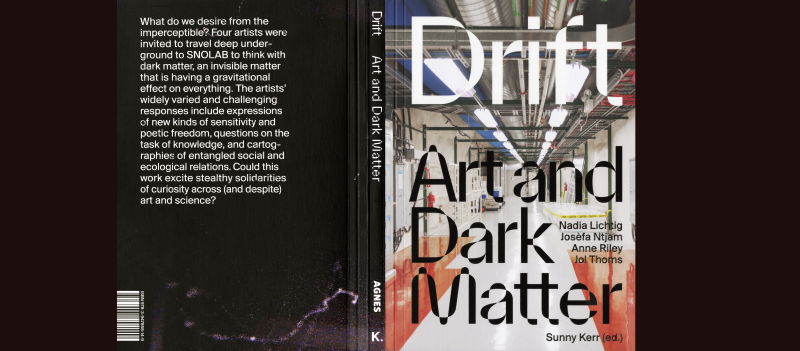 Drift: Art and Dark Matter features residency artists Nadia Lichtig, Josèfa Ntjam, Anne Riley and Jol Thoms with essays by exhibition curator Sunny Kerr, Nobel prize-winning astroparticle physicist Art McDonald, and Denise Ferreira da Silva, a leading critic of post-Enlightenment thought. [more information and purchase]
Drift: Art and Dark Matter features residency artists Nadia Lichtig, Josèfa Ntjam, Anne Riley and Jol Thoms with essays by exhibition curator Sunny Kerr, Nobel prize-winning astroparticle physicist Art McDonald, and Denise Ferreira da Silva, a leading critic of post-Enlightenment thought. [more information and purchase] -
Research Project
2021 - Ongoing
Ars Scientia: Merging Artistic Practice with Scientific Research
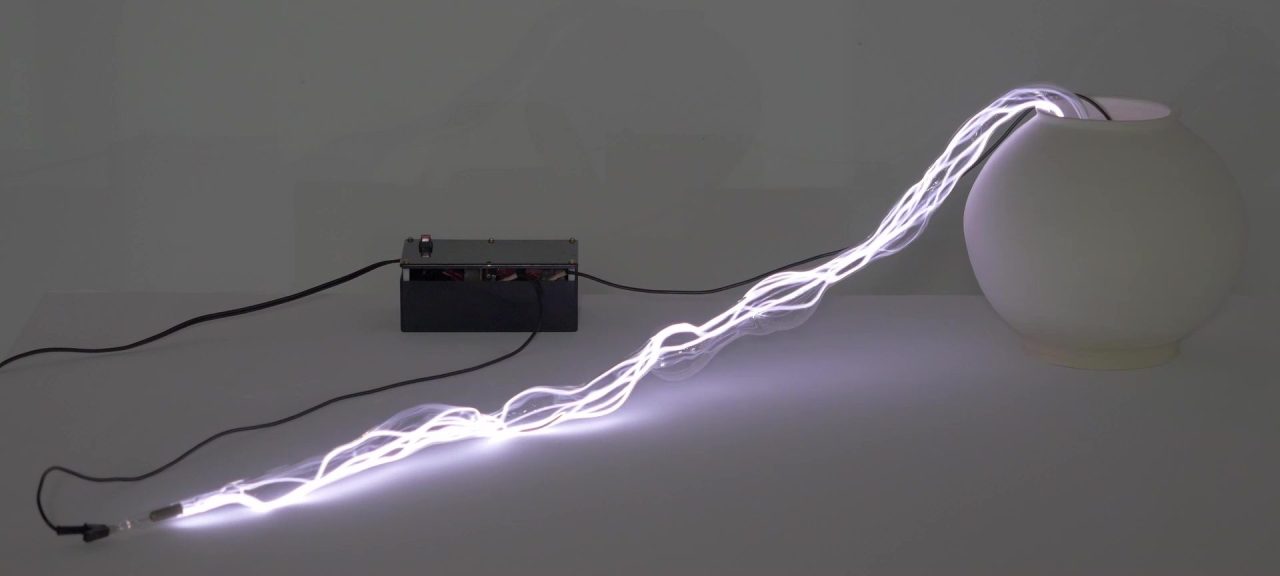
The long search for dark matter has put the spotlight on the limitations of human knowledge and technological capability. Confronted with the shortcomings of our established modes of detecting, diagnosing and testing, the search beckons the creation of new ways of learning and knowing. Fusing the praxes of arts and science in the emergent fields of interdisciplinary research, Ars Scientia, a tripartite partnership between UBC's Stewart Blusson Quantum Matter Institute (Blusson QMI), the Department of Physics and Astronomy and the Belkin, presents an opportunity to foster new modes of knowledge exchange across the arts, sciences and their pedagogies. Funded by UBC’s Research Excellence Cluster program, Ars Scientia will conduct rich programming and research to address this line of inquiry over the next two years beginning in 2021.
[more] -
News
14 Sep 2021
Drift: Reading Room
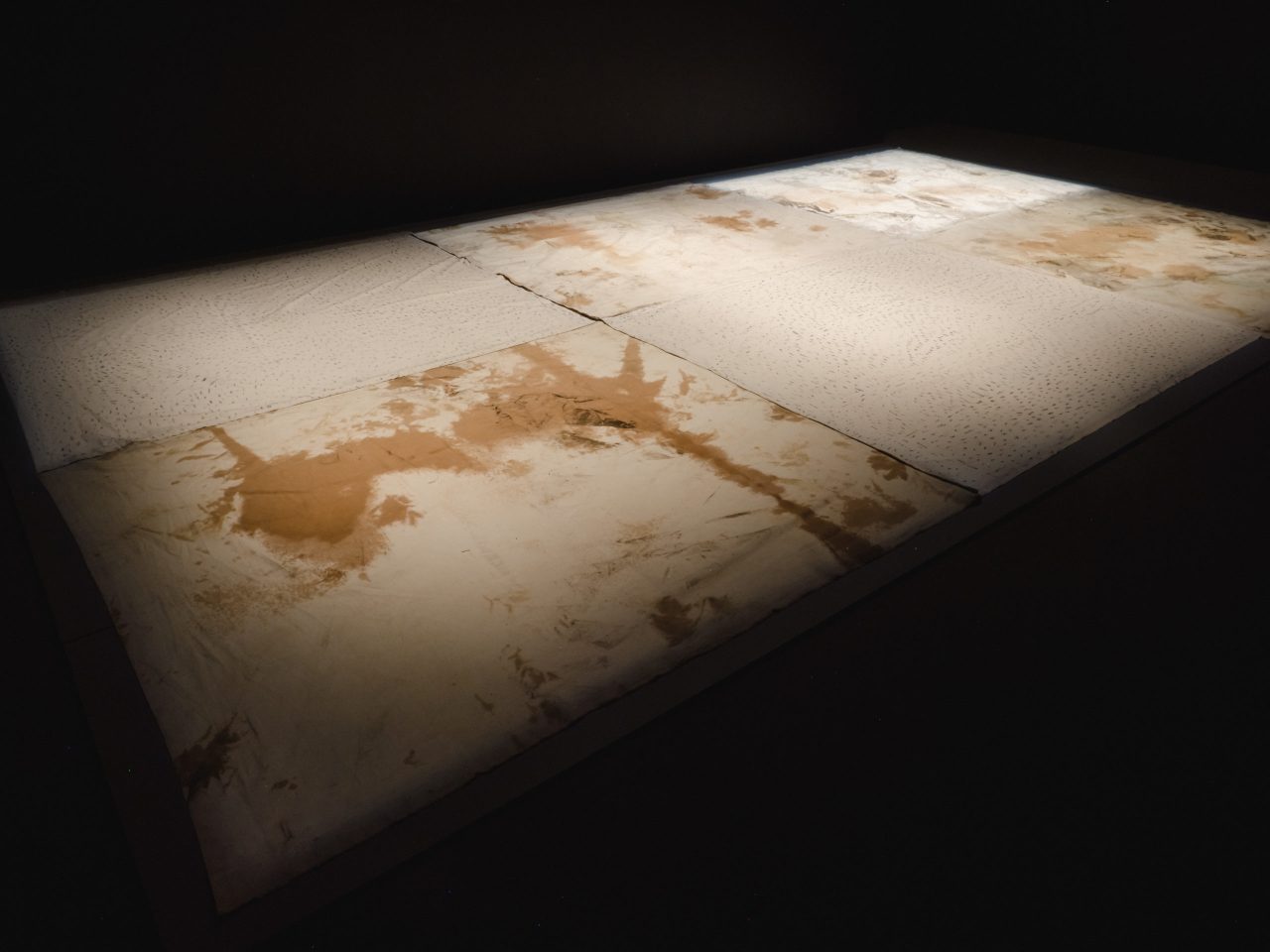
Resources related to the artists in Drift: Art and Dark Matter. This list is not exhaustive, but rather comprised of suggested readings compiled by researchers at the Belkin. These readings are intended to provide additional context for the exhibition and act as springboards for further research or questions stemming from the exhibition, artists and works involved.
[more] -
Event
Thursday 9 Sep 2021, 6 pm
Drift: Opening with Denise Ferreira da Silva and Jol Thoms
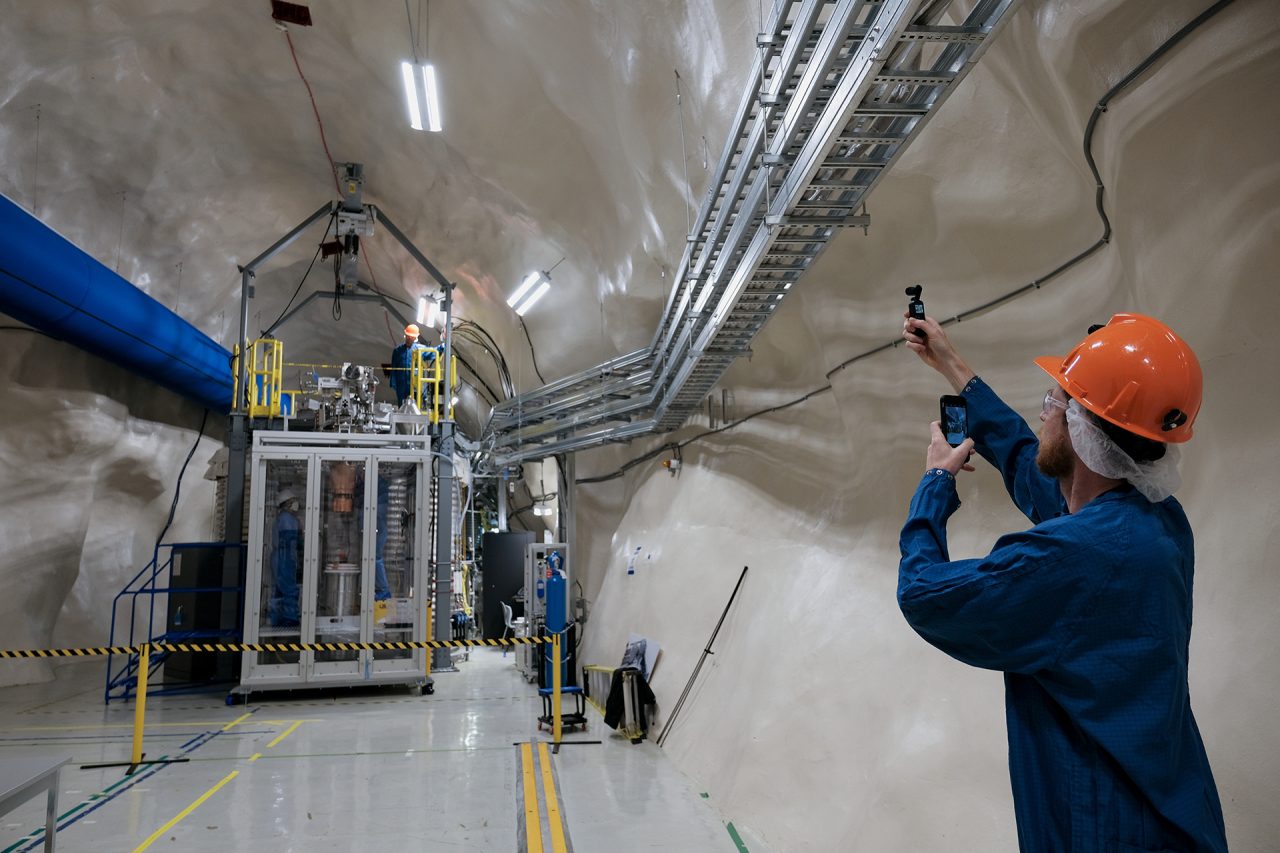
Please join us for the opening of Drift: Art and Dark Matter with a performance-conversation by artists Denise Ferreira da Silva and Jol Thoms. Ferreira da Silva and Thoms will touch on intersections between Soot Breath / Corpus Infinitum (2020) and n-Land (2021), both of which will play throughout the evening on the Belkin Screen.
[more] -
Tour
SATURDAY 30 Oct 2021, 1-1:30 PM AND 2-2:30 PM
SUNDAY 14 Nov 2021, 1-1:30 PM AND 2-2:30 PM
SATURDAY 27 Nov 2021, 1-1:30 PM AND 2-2:30 PM
SATURDAY 4 Dec 2021, 1-1:30 PM AND 2-2:30 PM
Tours: Drift with Rhea Gaur
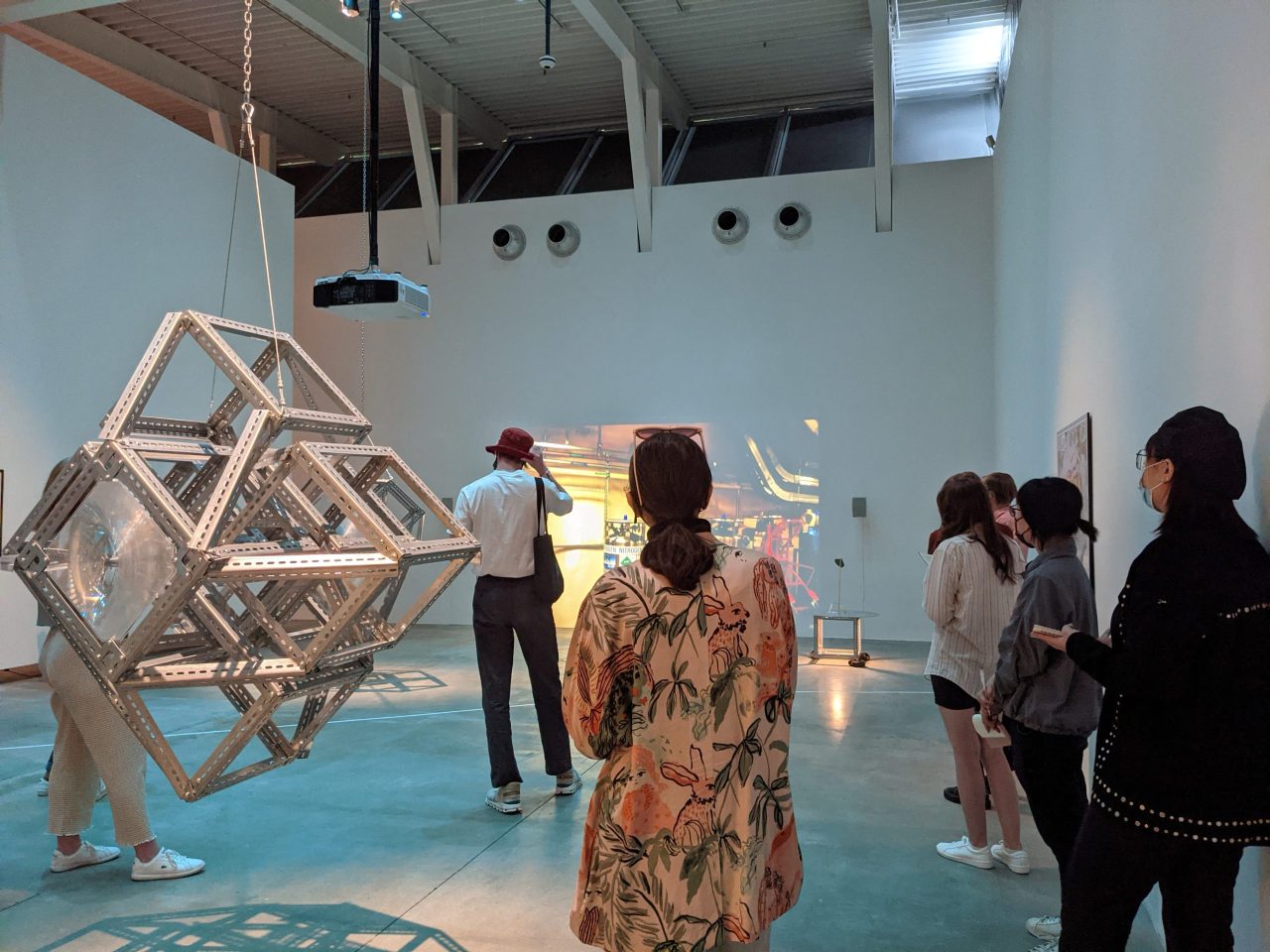
On select Saturdays and Sundays, join us for short drop-in tours of Drift: Art and Dark Matter with UBC Department of Physics graduate student Rhea Gaur. While advance registration is not required, tours will be capped at 15 guests.
[more] -
Event
Wednesday 1 Dec 2021 at 2 pm
Concert at the Belkin: Drift
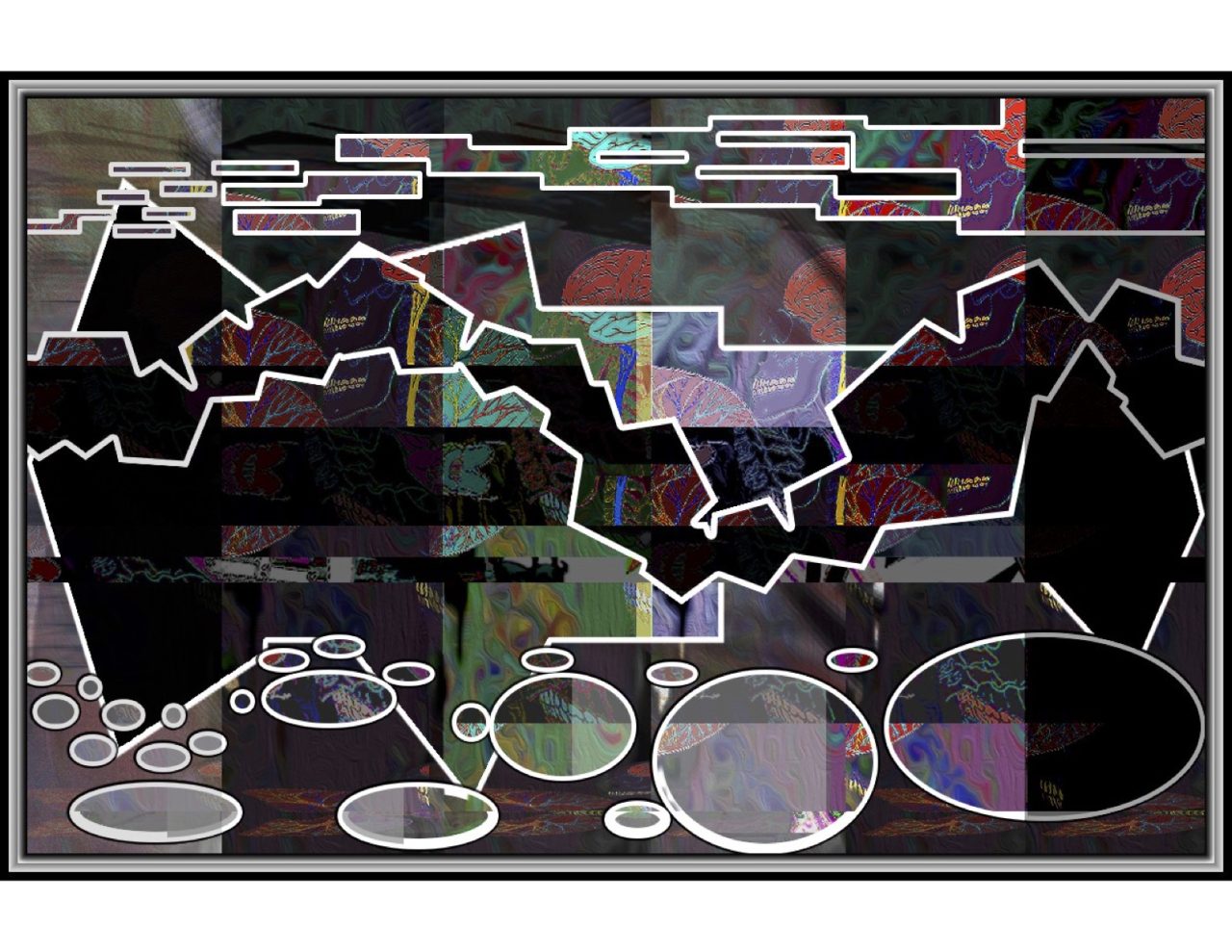
We were delighted to once again welcome the UBC Contemporary Players to the Belkin for a concert inspired by the exhibition Drift: Art and Dark Matter. Led by director Paolo Bortolussi, this graduate and undergraduate student ensemble from the UBC School of Music drifted through the gallery, creating a unique response to themes of the exhibition. For the first time this year’s concert featured graphic scores created by composition students and interpreted by the players in the ensemble.
[more] -
News
09 Apr 2021
Art and Medicine: Rounding at the Belkin
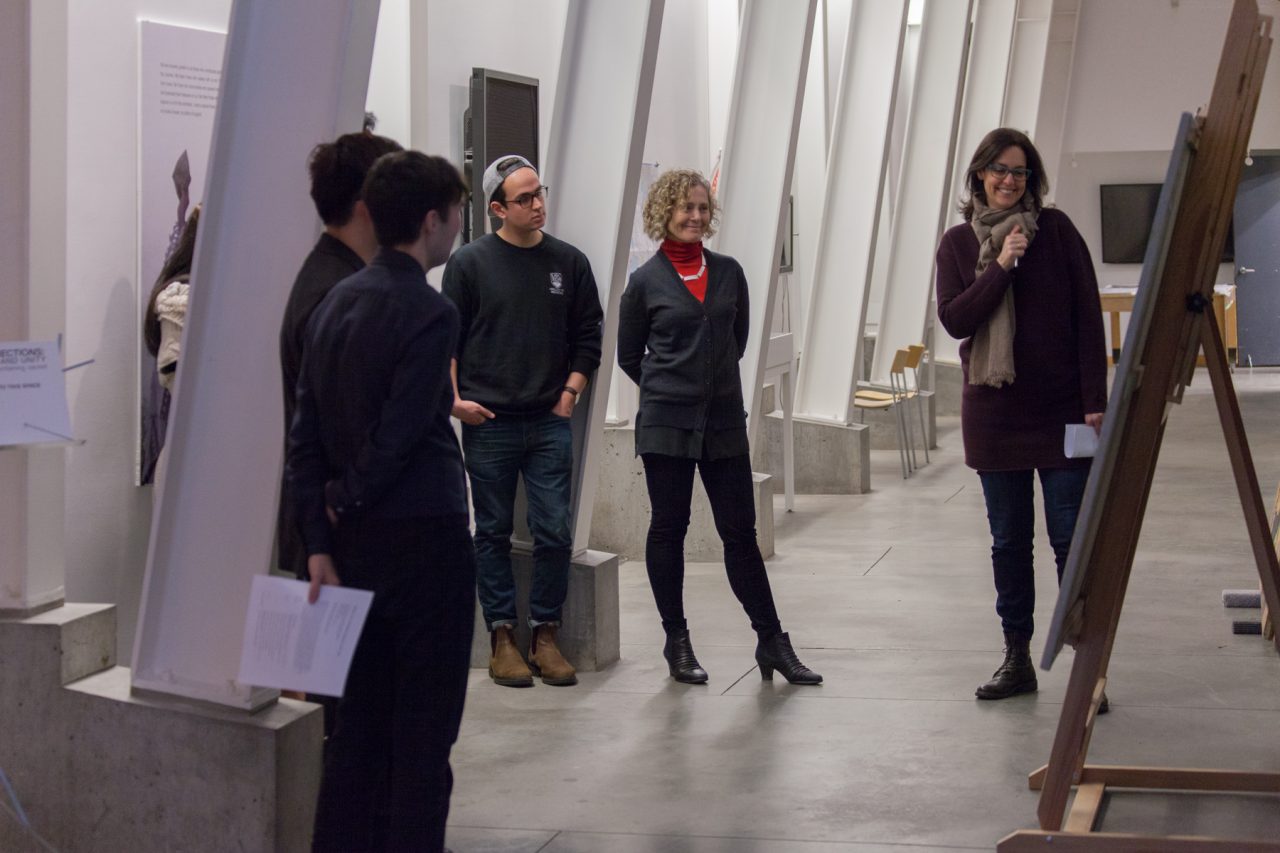
In 2016, Shelly Rosenblum and Carol-Ann Courneya (Assistant Dean of Student Affairs at UBC's Faculty of Medicine) collaborated to create Art and Medicine: Rounding at the Belkin , a course that invited medical students to consider how engaging with art could strengthen observational skills in the sciences.
[more] -
Exhibition
9 Sep – 5 Dec 2021
Outdoor Screen: Drift
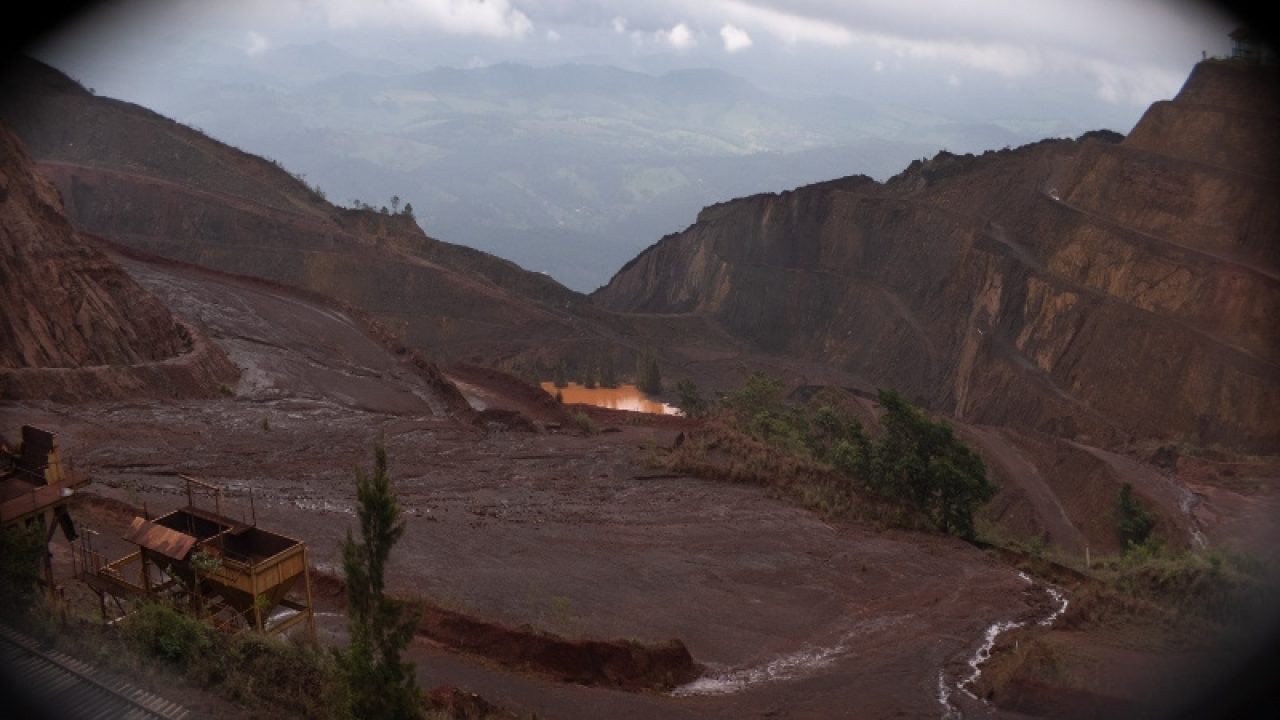
This fall, the Belkin's Outdoor Screen sets a number of works in relation to one another, drawing associations between the exhibition in the gallery, the longterm artist's residency in the Outdoor Art program and the affinities to be found with research partners on campus. Installed in the summer of 2021, the 4x2 metre digital screen extends the exhibitions and programs from inside the Belkin to the outside through video, sound and animation, supporting a more porous encounter for visitors. Transforming the grassy area in front of the gallery into an informal and flexible lounge space, with the boardwalk from Holly Schmidt's Fireweed Fields as a functioning viewing platform, the screen creates a space for engagement and conversation. Alongside curated works, the screen also highlights upcoming programs and events, and is often a site for facilitated conversations, class visits and workshops.
[more] -
Event
Monday, 12 Sept 2022 from 6 to 8:30pm
a gathering for mattering with χʷəy̓χʷiq̓tən Audrey Siegl, T’uy’t’tanat-Cease Wyss and Anne Riley
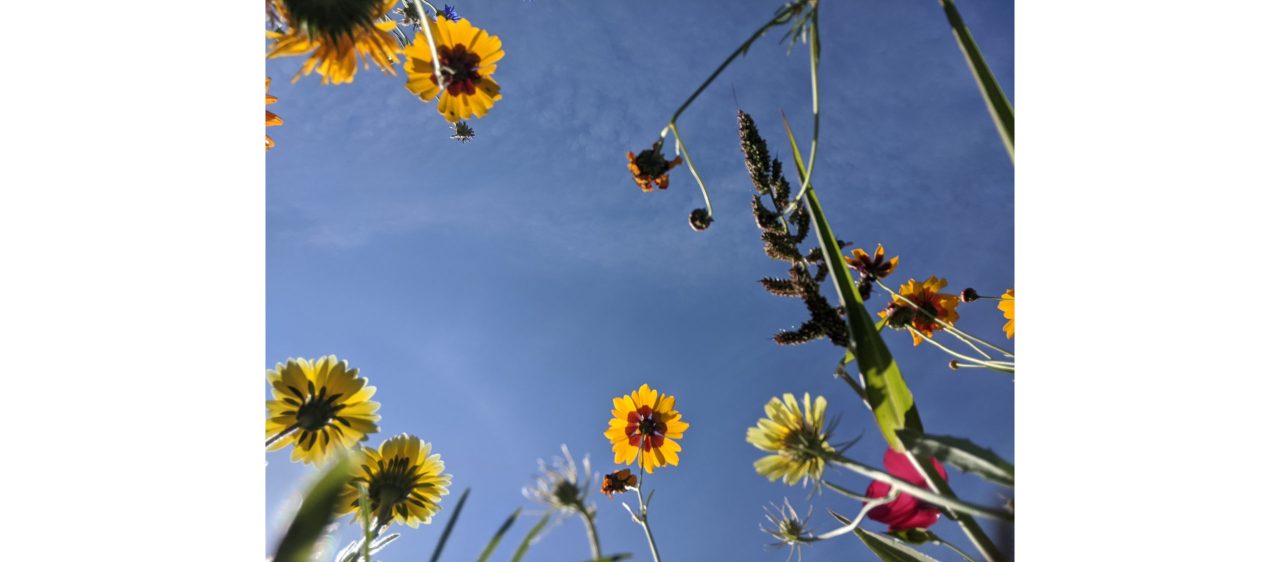
Join artists χʷəy̓χʷiq̓tən Audrey Siegl, T’uy’t’tanat-Cease Wyss and Anne Riley for a sunset gathering on Monday, 12 September 2022 at Spanish Banks.
[more]